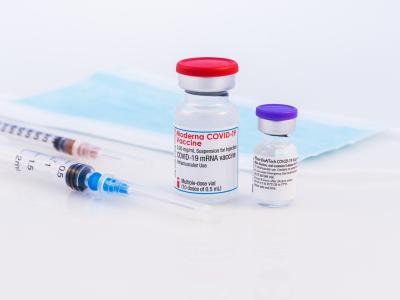US study: Only 0.2% of pregnant women infected with Zika while traveling
A study yesterday in the American Journal of Obstetrics and Gynecology found that 0.2% of US women they screened contracted Zika after traveling to endemic areas while pregnant.
To conduct the study, Dallas researchers screened 14,161 pregnant women for travel to a Zika-affected country from Mar 14 to Oct 1, 2016. Four percent (610) of women reported such travel, and tests showed evidence of possible Zika virus infection in 29 (5.3%), thus the prevalence of asymptomatic or symptomatic Zika virus infection among pregnant women was 2 in 1,000. The vast majority of women (97%) with Zika had traveled to Central America.
Researchers said that none of the 391 babies they analyzed from travel-affected pregnancies showed any signs of Zika infection, microcephaly, or reduced head circumference.
This is one of the first prospective studies to measure risks for pregnant travelers. Babies born to women who contract Zika while pregnant can develop microcephaly, a congenital deformation that leads to small head circumference and developmental problems.
Jan 30 Am J Obstet Gynecol study
Africa CDC officially launches today
African leaders today officially launched the Africa Centres for Disease Control and Prevention (Africa CDC) at its offices in Addis Ababa, Ethiopia, a need identified by the African Union in 2013 with the plan formalized in 2015 in the wake of West Africa's Ebola outbreak in a collaboration between the US CDC and its African counterparts.
In November John Nkengasong, PhD, was named as Africa CDC's first director. Before coming to Africa CDC, he worked in global health for the US CDC for two decades on projects that included HIV and tuberculosis.
In a press release on his appointment, Nkengasong said, "One major lesson learned from the recent Ebola virus disease outbreak is that diseases are a security, economic, and health threat to Africa. The Africa CDC therefore offers a unique possibility to enhance the continent’s capacity to detect and rapidly respond to these threats in order to make Africa secure and safe."
In a recent report on the new center in The Lancet Global Health, Nkengasong and his coauthors said Africa CDC, part of the African Union, will function as a network with five collaborating centers in Egypt, Nigeria, Gabon, Zambia, and Kenya, each with a lab and advanced capacity to rapidly identify common and uncommon pathogens. Africa CDC will lead efforts to promote or strengthen National Public Health Institutes in each member state and closely collaborate with the World Health Organization (WHO) Regional Office for Africa.
Africa CDC Web site
Jan 31 Africa CDC news release
Nov 30, 2016, African Union press release
Jan 17 Lancet Glob Health commentary
Apr 13, 2015, CIDRAP News story "US, African agreement formalizes creation of African CDC"
Cholera outbreak in Somalia tops 2,000 cases
The WHO said in an update posted yesterday that Somalia has reported 930 additional suspected cases of cholera and 6 deaths from Jan 18 to Jan 22.
The new numbers bring the totals in the East African country to 2,236 suspected cases, including 32 deaths. The case-fatality rate is 1.4%.
Last year, the country reported 15,619 suspected cases of cholera, including 531 associated deaths, with a case fatality rate of 3.4%. Cholera, transmitted through tainted drinking water, causes watery diarrhea and fever. It is most dangerous to children under 5 and older people, who can suffer from dehydration after infection.
According to the WHO's update, the organization is working with Somalia's Ministry of Health to organize a mass vaccination campaign using oral cholera vaccines in an effort to halt the transmission of the disease to non-affected areas of the country.
Jan 25 WHO update










